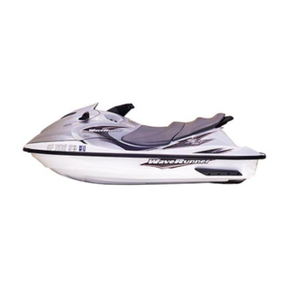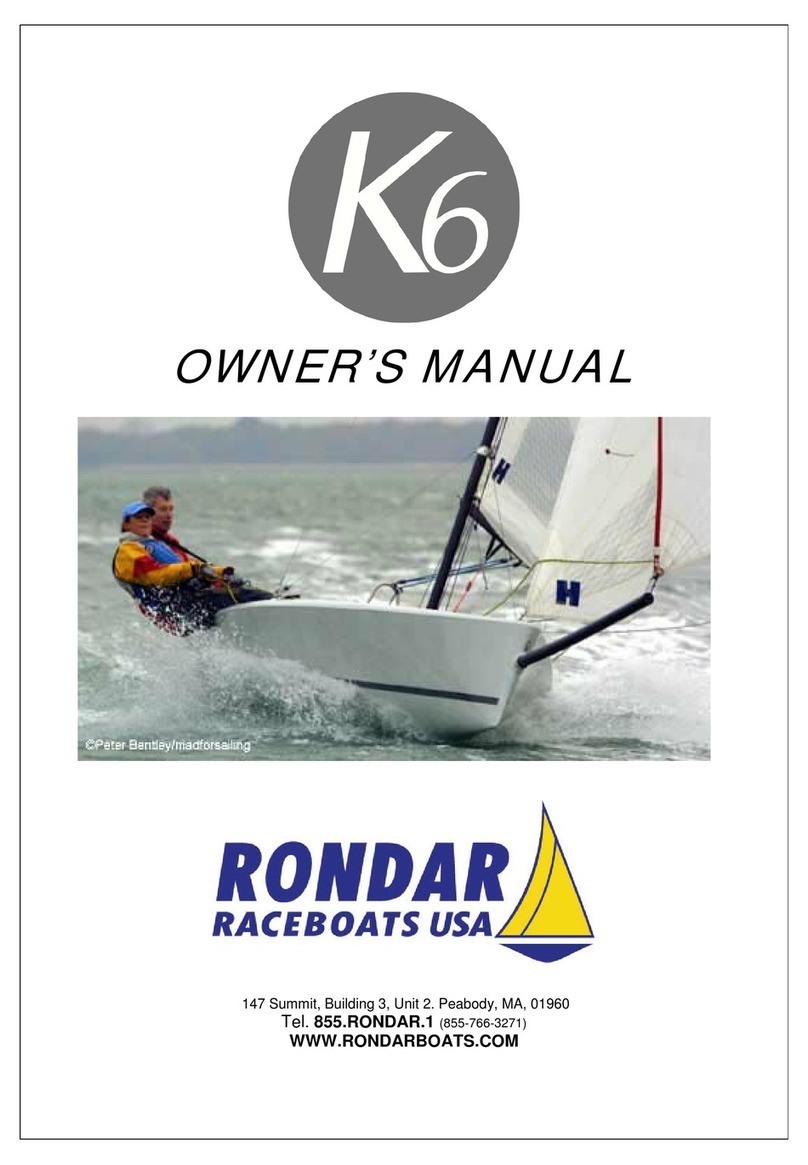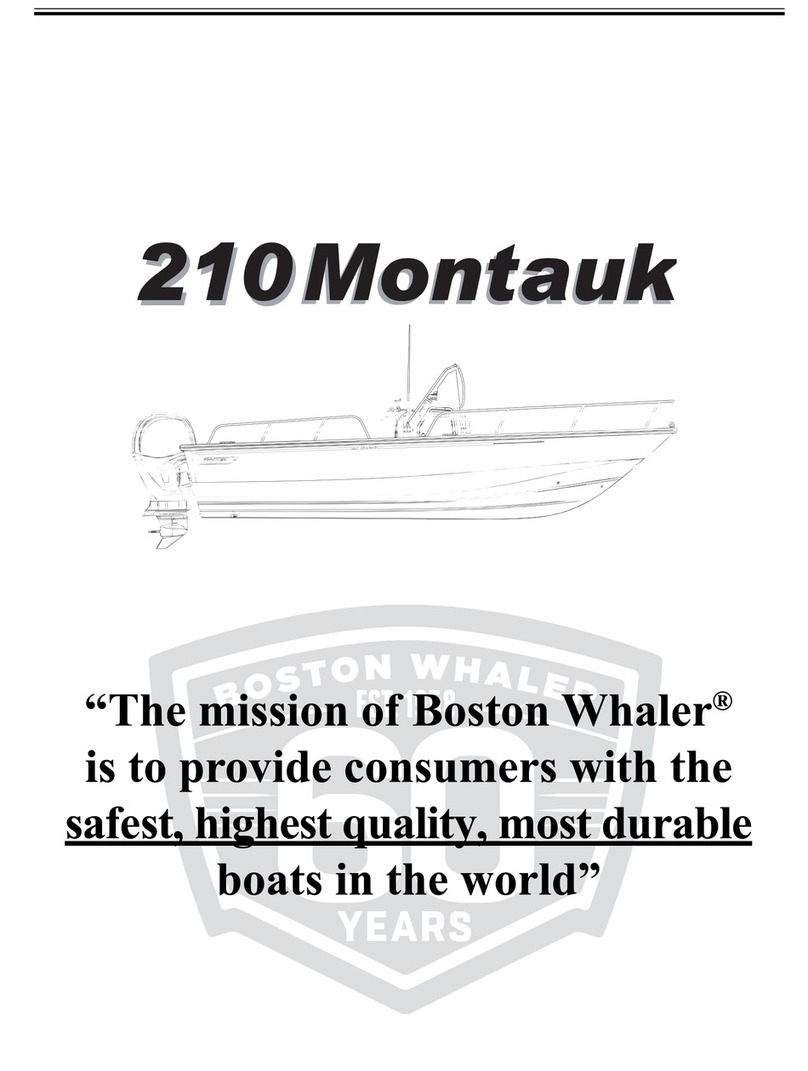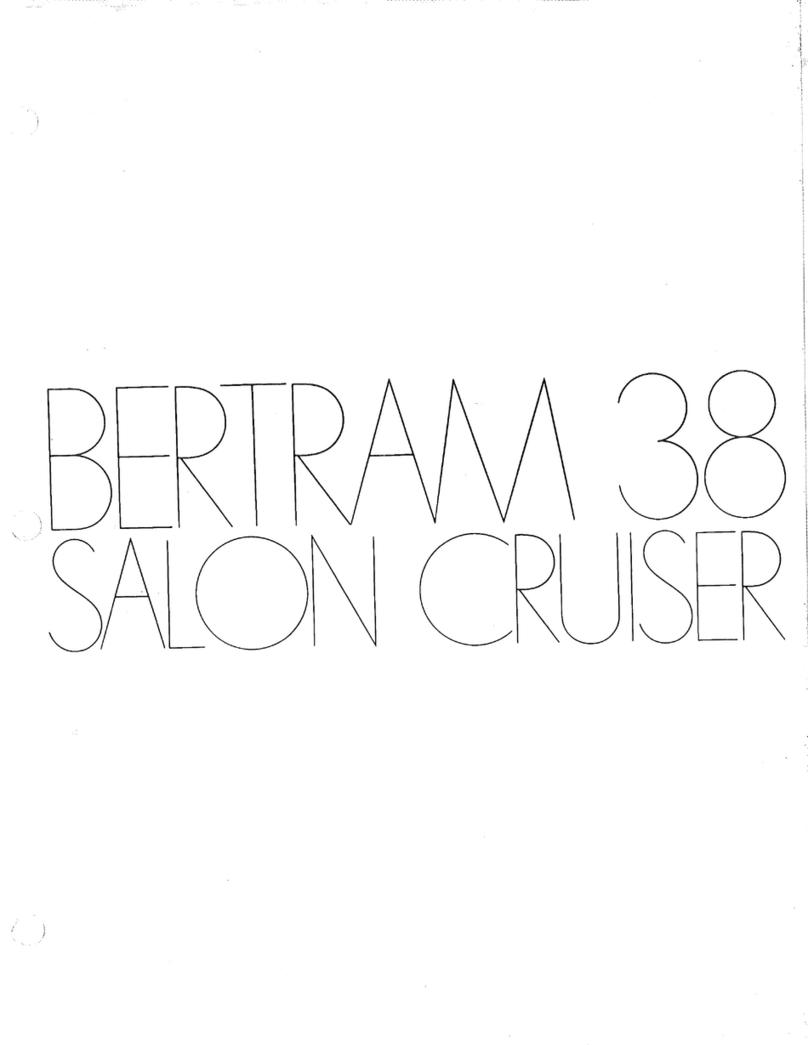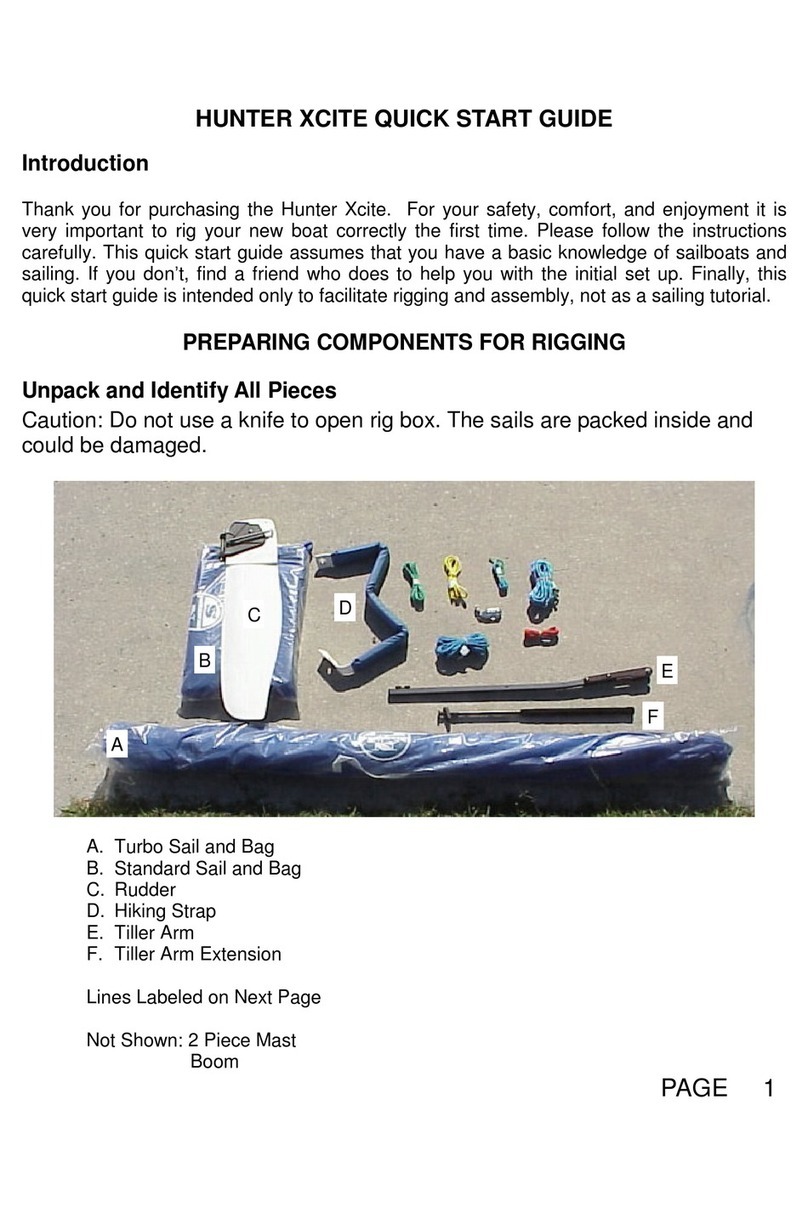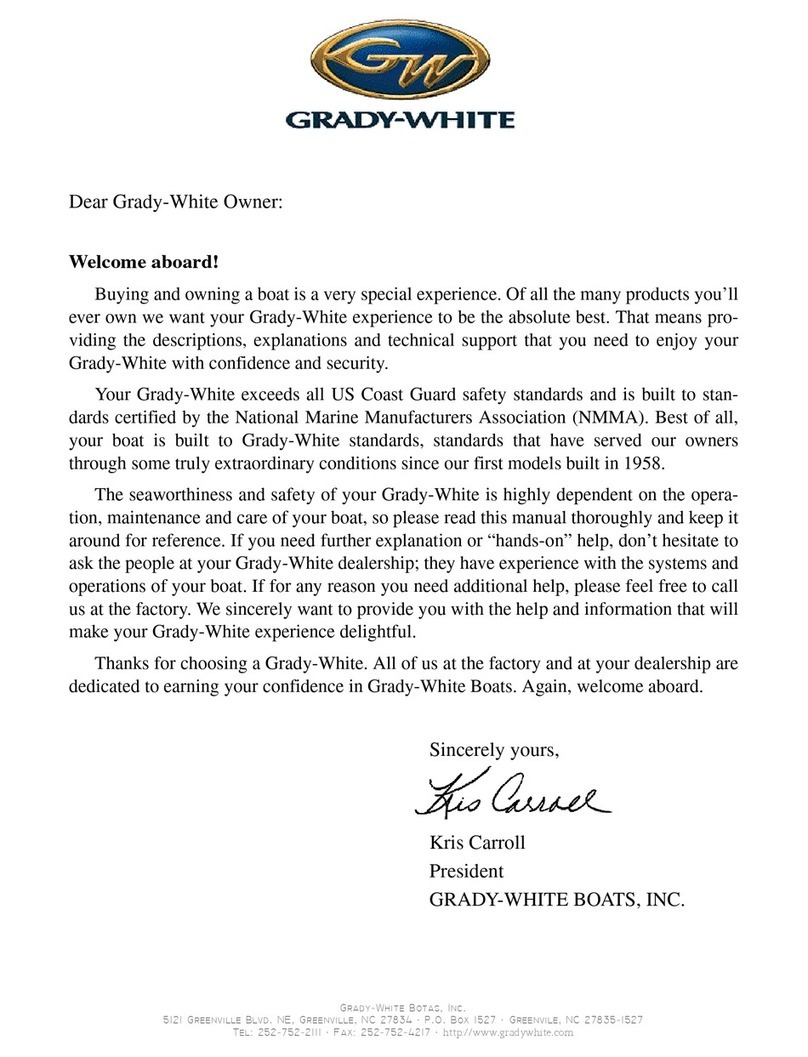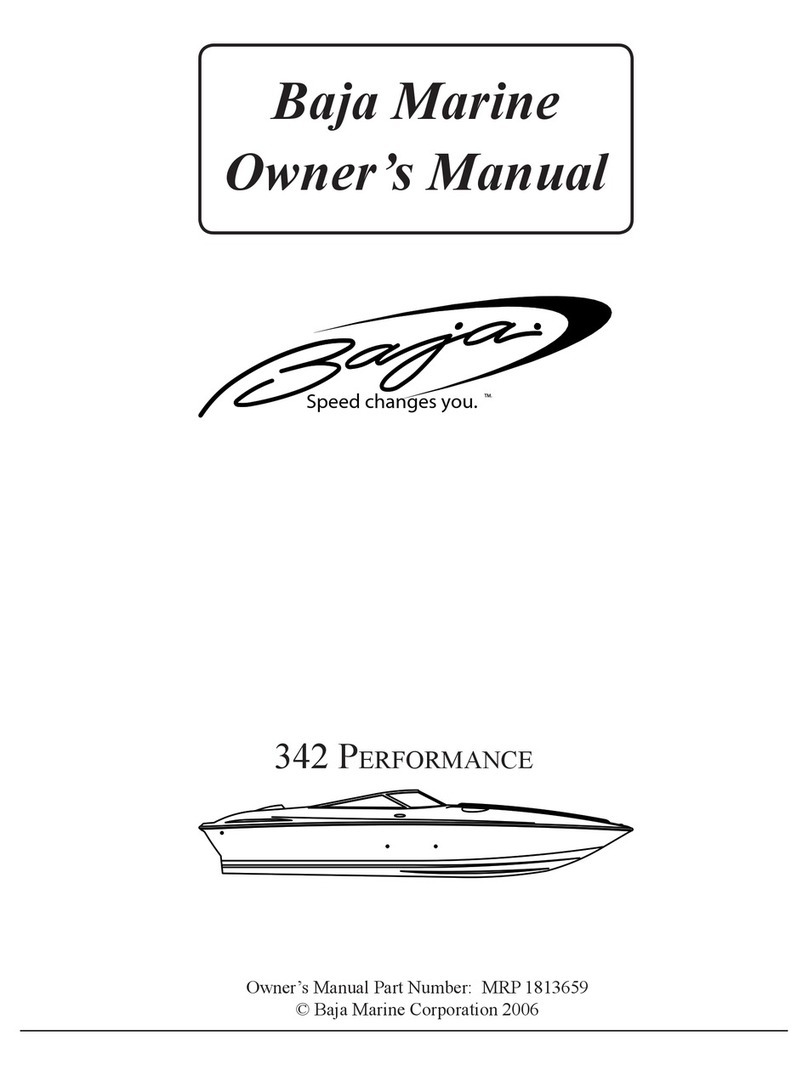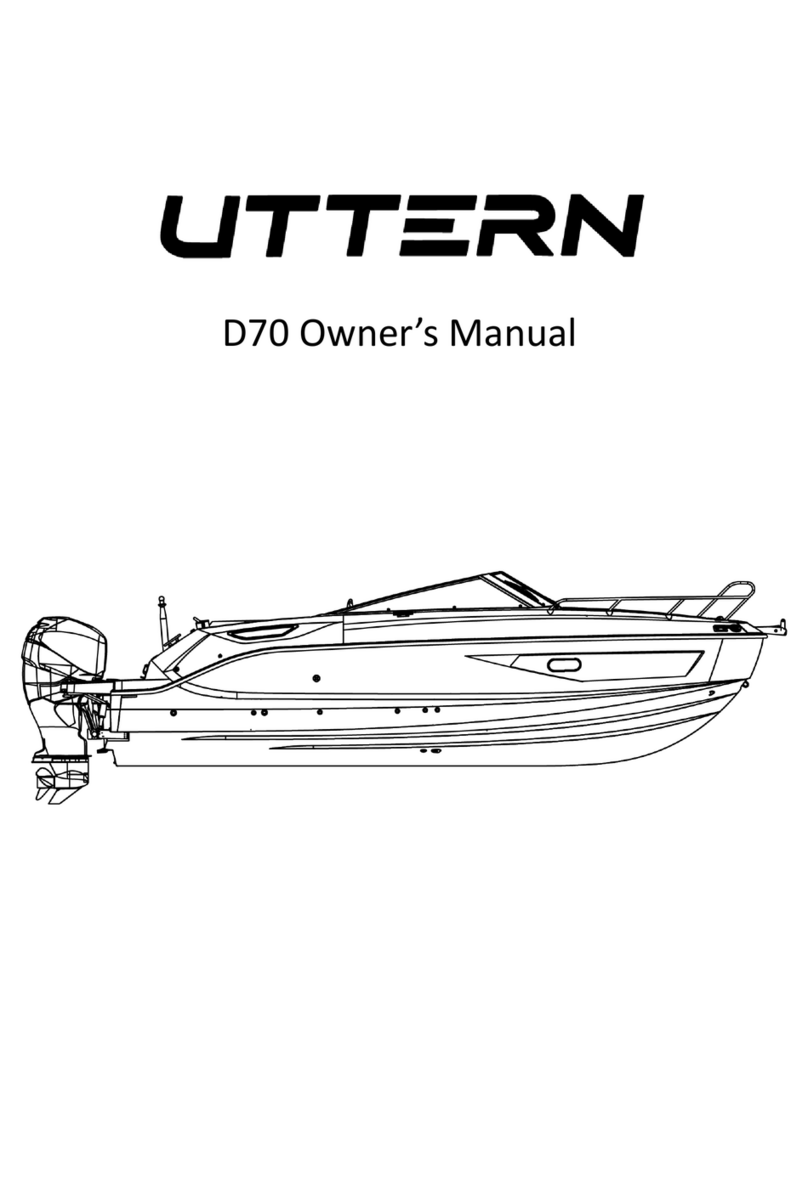Sea Sport Salmon Shark User manual

Salmon Shark
Operation Manual and Boater’s Handbook

The Salmon Shark is a SeaSport 2700 Navigator.
Operation
Salmon Shark is powered by a single Volvo Penta KAD41 diesel engine coupled
to a DP-E outdrive. The most efficient cruising speed is approximately 18-22 knots @
3200 rpms.
•Never operate this engine over 3400 rpm.
This engine/outdrive combination has provided tens of thousands of hours of reliable
service on charter boats. There are a few tips that keep both the engine and drive healthy.
•The drive should “clunk” into gear positively. Failure to engage fully into gear
will cause outdrive damage. Do not slam the lever back and forth from forward to
reverse, always pause in neutral.
•Warm the engine up to temperature before accelerating. It’s best to run under load
at 1500 rpm until the engine is at operating temp.
•Accelerate slowly until the boat is on step. The engine has a lot of torque.
“Punching” it will break outdrives.
•Check fluids after each long run and/or daily. Do not overfill. There will be a
significant delay from the time you add until it shows on the dipstick.
Expensive damage usually starts out as a small noise that gradually becomes a big
Bang. If you hear anything that resembles “ticking”, “grinding”, “thumping”,
“grumbling”, or “whining”, it’s best to shut down to idle speed, or stop the engine
completely. A bad gimbal bearing and/or a bad u-joint will normally change sounds
when the wheel is turned hard over to hard over. Stop operation if you hear these noises.
When a u-joint explodes, it can do severe boat damage. If the rubber boot is ruptured, you
will take on water.
While operating any vessel, it is important to monitor engine gauges. Immediately shut
down if any alarms sound, if the operating temperature climbs above 190 degrees, or if
oil pressure drops.
Pay attention to the vessel. Most problems start off small and can be prevented.
Monitor the bilge spaces and engine regularly.
Additionally, it is important to constantly watch ahead for logs, ice, and other debris.
Striking a floating or submerged object will do severe damage to the vessel and outdrive.
With lost revenue and shipping, a broken outdrive can cost nearly $20,000 during the
season. Pay careful attention while at the helm!

If the engine fails to turn over and you don’t believe you have dead batteries, it is
possible and most likely that the starter solenoid is not working. Try tapping the starter
with something heavy (hammer or lead weight). Solenoid malfunction is sometimes an
issue among marine engines.
Boat Maneuvering
Whittier is known for it’s occasional windy conditions, especially during clear, high
pressure conditions. Although these conditions are typically only local to Whittier and
the Sound will be considerably calmer, winds make moving around in the harbor and
other close quarters tricky. Expensive damage to your boat or others is possible if you are
not extremely careful. Travel at a very slow speed in the harbor, even if this means you
have to bump the drive in and out of gear. Always be prepared with lines and fenders
ready. Have at least one person holding and ready to use an extra fender if needed. Call
for assistance if necessary. We will meet you at the fuel dock, or outside dock if you need
help. Whittier Harbor will also send personnel to assist you if you need help. They can be
called on VHF channel 68. Never approach a dock without fenders out and people ready
to handle lines. Err on the side of caution, you don’t want to be responsible for
expensive damage.

Boat Loading
Load the boat so that it sits level. Listing is better corrected by moving gear rather than
by using trim tabs. Trim tabs will slow you down and decrease efficiency. Do not
overload the vessel as this will stress the engine and drive and may cause unsafe stability
issues. Eliminate extra and duplicate gear. Most boaters carry far more gear than
necessary.
Cooling System
The engine is cooled via a seawater heat exchange system. Seawater is pumped through
the engine and is used to cool the freshwater/antifreeze system surrounding engine
components. There is a sea strainer located on the front port side of the engine.This will
require occasional cleaning and is the most likely cause of engine overheating. The fresh
water system is filled on the top of the engine and operates like a car radiator. Coolant
levels should be checked prior to long trips. Only open the cap when the engine is cool.
An overflow reservoir is mounted to the engine. Levels in this bottle change greatly. As
long as the tank on the engine is full, the engine is ok.
Fuel
Two 80 gallon fuel tanks provide plenty of range. One is starboard and one is aft. There
is also a 7 gallon gas tank for the auxiliary motor.
A Racor filter is located on the Port side aft of the engine. 2 micron replacement elements
are onboard in the unlikely event that a filter should become plugged. A second stage
filter is mounted on the port side of the engine forward of the fuel pump. This filter
should not need service, but there is a spare onboard.

Auxiliary Power
An outboard provides auxiliary power. There is a tiller extension handle onboard for
steering. Fuel for the motor is supplied via an internal 7 gallon tank.
Electrical System
The boat is equipped with two group 27 batteries which are located forward of the
engine. The battery switch is located on the transom under the hatch. Normally, it should
be left on one battery unless additional power is needed. To prevent discharge, always
leave the engine running when using the pot puller and anchor winch.
Bilge Pumps
The Bilge pump is located under the engine and should be left on Auto at all times.
Bilges should always remain fairly dry. Monitor regularly and if water is present,
immediately address the source of the water.
Trim and list
The stern drive trim is controlled by the toggle switch on the shift and throttle control.
Normally, it does not need to be adjusted. If you do need to tilt the drive, be certain that it
is all the way down and then “bumped up” before operation. Severe ujoint damage will
occur if you operate the drive when it is up. Adjusting trim should not be necessary on
your trip. Do not operate this vessel in the shallows.
Consider list when loading the boat. If the boat lists to one side, a correction can usually
be made by sliding a heavy cooler, the halibut weight basket, fish box, etc. to even the
boat out. It’s unlikely that you will need to use the trim tabs, but they are controlled from
the rocker switches on the dash.
Salt Water Wash down
The wash down pump is located in the engine compartment. The pickup is through the
sea chest in that compartment. A switch located above the hose operates the pump. The
switch should turned off when not in use. Although there is a pressure switch, leaving the
pump on all of the time will lead to shortened life. Additionally, the pump will flood the
boat if a line is ruptured.

Fish Hold
A large fish box is located forward of the engine compartment. Please clean it well. You
will be charged a cleaning fee if it is left dirty.
Electronics
A Garmin multifunction display offers GPS charting, radar, and broadband sonar
functions. Operation is intuitive, but the manual is onboard, or can be downloaded to a
smart phone if needed.
Cook stove
An alcohol fueled cook stove is offered in the galley. Take care when using it and watch
for fires and CO. Do not use it as a heater when unattended. The user manual and
additional fuel are onboard. Do not fill the stove through the burners, do not overfill, and
follow the directions provided.

Sink
The sink is located under the captain’s seat. A 30 gallon freshwater tank provides fresh
water. Take care not to crush the spout when you lower the seat.
Marine Head
The marine head is a manual pump system with a holding tank, macerator, and dock
pumpout fitting. The seawater inlet is valved and is located under the cabin floor. Do not
put anything in the toilet except waste and marine toilet paper. You will be charged a
steep fee if you plug the system with paper towels, home toilet paper, feminine products,
or “flushable”wipes.

Safety Equipment
Adult personal floatation devices located in the cuddy cabin. Flares, first aid kit, fire
extinguishers, a throwable floatation device, and a smoke/CO detector are onboard.
Become familiar with their locations prior to departing.
Anchoring
The anchor system consists of a 22lb Bruce anchor, 20’ of chain, and 600’ of line. The
winch is operated by the control on the dash. There is a resettable breaker on the dash.
Do not wrap the anchor line around the outdrive. Doing so in heavy seas and/or
current will sink you quickly. There is a sacrificial line tied to the chain. This should
allow a stuck anchor to be pulled.
Pot Puller
The pot puller on the davit is an electric capstan. A lever switch located on the gunnel
near the davit turns it on. Use care when pulling pots. Do not pull too hard, personal
injury and/or damage to the boat can occur. A automatic resetting circuit breaker will trip
if the motor becomes hot. It will work again when it cools down.

Raft
An Achilles raft is onboard for shore excursions. Take care in where you land the raft as
sharp rocks and barnacles will puncture the raft. You are responsible for damage to the
raft. Always wear a life jacket and be prepared while ashore. Remember to take adequate
safety equipment, food and water, and to be mindful of tidal and weather conditions.
Monitor the vessel
Most boat problems begin small and grow quickly. Monitor bilges and engine regularly.
You are responsible for the equipment and contents of the vessel.
Returning the Vessel
It is your responsibility to return the vessel in the condition in which you received it. Fuel
tanks must be full and the boat needs to be clean. Portable toilets also need to be emptied.
Cleaning supplies will be provided to you after you unload and prior to final checkout.
Plan accordingly. If you run off for the tunnel and leave the boat messy, you will be
charged a steep cleaning fee.
Whittier Harbor
Make arrangements with the Harbor Master if you plan to stay in the harbor overnight.
You are responsible for moorage fees while you are renting the vessel.
This manual suits for next models
1
Other Sea Sport Boat manuals

